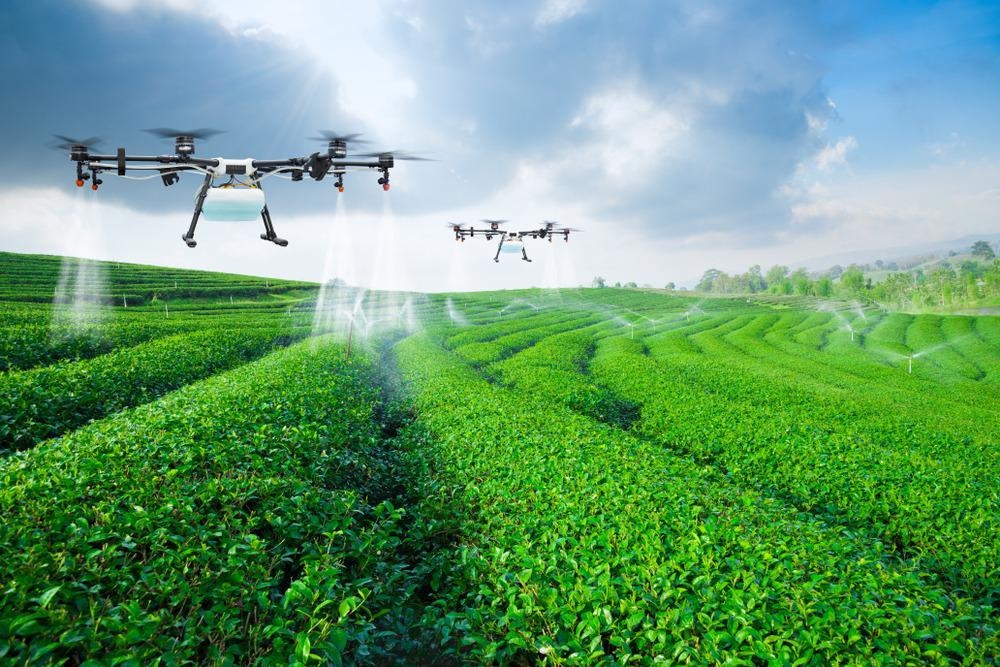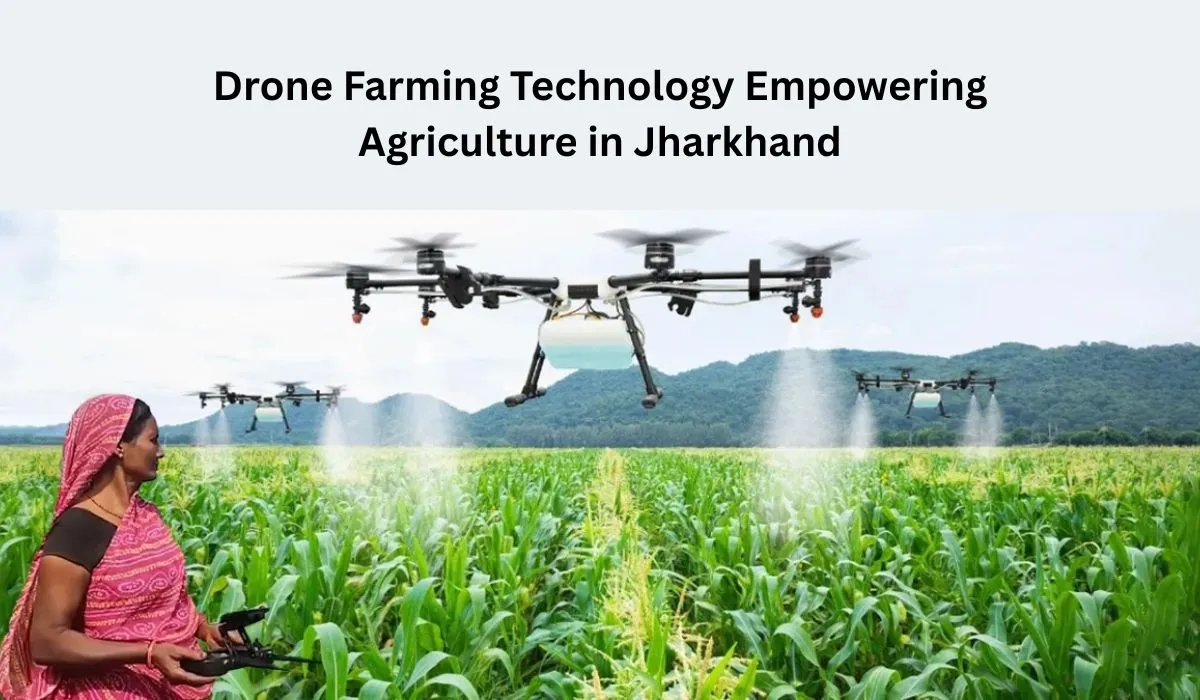Jharkhand has become a land of evolving agricultural practices. The state is facing challenges like labour shortages, unpredictable weather, and resource inefficiencies. Also limited access to technology. From spraying nutrients more precisely to unlocking crop health insights via sensors. Drones promise to modernise farming while keeping its heart rooted in community livelihoods. Drone Farming Technology is considered early-stage in India. In Jharkhand, this is a way to uplift farmers and empower women.
Jharkhand
A Landscape of Promise and Pain Tribal lands and smallholdings are the foundation of Jharkhand's agriculture. Since labour is scarce, urban migration pulls youth away.
Yet:
- In regions like Ranchi the soil is fertile.
- Institutional setups provide research and outreach potential. Be it from KVKs to universities.
- Drone farming is going well with existing ambitions. It states the state government actively promotes mechanisation.
Building on Existing Schemes
Khadi Vikas Mandal and Jharkhand reserve funds for mechanisation. Integration with schemes will make drone adoption more seamless. For schemes like PM Kisan, CHCs, and Kisan Drone.
Practical Use Cases in Jharkhand
Microspraying and Nutrient Management
- Scenario: drones deliver targeted nano urea or pesticides. In the fields of mandia or pulses.
- The benefit is reduced chemical use, faster coverage, and enhanced yields. Which echoes Karnataka’s success.
Crop Monitoring and Early Pest Alerts
- Early detection of pest infestations, moisture stress, or nutritional deficiencies is possible for farmers. If they use drones with multispectral cameras
- Rampur farmers could act fast, minimising losses.
Seed Sowing and Pasture Management
- On uneven lands drones that are equipped for direct seed distribution can help sow. It helps for tribal uplands or degraded areas. That requires afforestation or cover crop establishment.
Custom Hiring Centres (CHCs)
- Block-level drone centres are run by women SHGs or youth cooperatives. They offer affordable, rental-based access to tech, which reduces the capital burden.
Training and Employment
- To train local girls Jharkhand’s technical colleges can collaborate with Drone Didi. Turning them into operators, technicians, and agri-service entrepreneurs.
Problems and Solutions
Cost and Financing
- The barrier is that drone prices range from 50,000 to 5 lakh or even more. Farmers' annual incomes often struggle in the 70,000 to 80,000 range.
- The solution is that the subsidies coordinated ownership and lower entry barriers.
Training Gaps
- A barrier is that drone piloting, maintenance, and data analysis require technical skills.
- Solution: local drone hubs fill skill gaps. NSDC-certified training programmes and SHG-led workshops are some of them.
Regulatory Processes
- Local sensitisation will be needed. Even if Drone Rules 2021 and the Digital Sky platform have lessened the complexity.
- To simplify application procedures, the state must coordinate with DGCA and agri-departments.
Infrastructure Constraints
- Poor internet, unreliable power, and limited charging infrastructure can create problems during operations.
- Solar-powered charging, mobile data shops, and scheduled operation windows can lessen the problems.
Vision for 2030
- By 2027, pilot projects in Ranchi will have crop spraying and monitoring. Drone schools will be established in each agricultural division. Women leading self-help groups are running rental drone services.
- By 2028–29, drone services will reach more than 200 panchayats. Drones will be monitoring dashboards within the state agricultural portal, giving on-time alerts. Economic upliftment will be there.
- By 2030, drone tech will be integrated across major farming activities for spraying, sowing & monitoring. While exporting models to other nearby states, Jharkhand turns as a training center. Reduced chemical pollution and better yields will be some of the sustainable gains.
Drone Pilot Proposals

To change from planning to implementation.
- Technology testbeds will be done in Ranchi. Activities will include display plots using drones for spraying, sowing, and disease surveillance. Lead partners will be Agriculture University and IIT ISM Dhanbad. Metrics will include crop yield, cost savings and impact on the environment.
- Drone CHCs will set up Custom Hiring Centres in 50 blocks with drone operators. It will encourage SHGs and FPOs to co-own drones through subsidised loans. The services will include spraying, field mapping, and crop insurance damage surveys.
- The market will integrate with state procurement systems. Link drone monitoring data to banks and insurers to enable faster claims. Develop a drone app in local languages for booking, tutorials, and feedback.
Environmental Impact
Water Conservation
Traditional pesticide spraying uses 150–200 litres per acre. Drones can achieve the same with just 10–15 litres. That’s a 90 per cent saving crucial in drought-prone districts.
Reduced Chemical Load
Precision spraying via drones avoids blanket chemical application. This minimises soil degradation, runoff into rivers and ponds and harm to insects. Over time, this improves soil biodiversity and enables organic farming.
Lower Carbon Footprint
Tractors and diesel-run sprayers add to agricultural emissions. Drones, especially battery-operated ones, can run quietly, cleanly, and without harming the atmosphere. By promoting electric drone hubs, Jharkhand can align with its solar goals. under the Climate Change State Action Plan (SAPCC).
Read More:- Perovskite Solar Boosts Renewable Energy in Jharkhand
Final Words
In a land where forests meet fields and tribal coexists with technological aspiration. Drone farming is an addition. For Jharkhand’s farmers, smallholders, tribal families, and women, this is a flying revolution. It could bring equity, efficiency, and empowerment. It can turn sprayed fields into smart farms. Untrained youth into drone pilots, and SHGs into entrepreneurs. All it takes is vision, coordination, and trust in rural regularity. As thee drones take off, one field, one panchayat, one woman at a time.
Conclusion
Drone Farming Technology is a pathway to sustainable agriculture rooted in real lives. Jharkhand is a state rich in land yet often limited by finance, labour, and infrastructure. Drone empowerment can help in the transformation process.
This isn’t one-size-fits-all technology. It’s local. It’s inclusive. It’s community-led. It’s the future soaring to Jharkhand’s fields. A future where tech meets tradition and where a drone’s wings carry not just data, but dreams.













